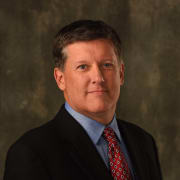Can the PGA Tour and LIV Golf Coexist in Their Current State?

More Weekly Read: LIV Golf's Unclear Future | JT and the Ryder Cup | Fore! Things
The question is premature but based on the comments from both sides this past week, it’s worth at least asking. Because if LIV is going to continue into next year and beyond—far from certain—it seems considerable work needs to be done.
After all, among the many reasons for strife is the conflicting nature of LIV Golf—both in player talent and conflicting events. Working that out would seem to take some effort.
For the moment, assume that LIV Golf is not folded into the new for-profit entity that is part of the PGA Tour, DP World Tour and Public Investment Fund agreement that would form a new entity that is going to be called PGA Tour Enterprises.
This is strictly if LIV is going to exist on its own. How does that work?
> Number of Events. It would seem near impossible for LIV Golf to have a 14-event schedule as it does now. Perhaps eight, maybe 10 events. Why? In theory, the players would need to be available for both LIV and PGA Tour events. If the PGA Tour requires its usual 15-event minimums, then 14 LIV tournaments can’t work.
> Schedule. Let’s say there are 10 events. Ideally, four or five would be played following the Tour Championship in August. Say one in September and two each in October and November. This creates the possibility for an international swing. Perhaps two events in Australia followed a month later by two in Asia. It also means less conflict with the PGA Tour events during the regular season.
What to do about those weeks? Starting in February, LIV could perhaps play one tournament a month into July, finding the best places to work with the PGA Tour schedule. If it means going up against a lower-level PGA Tour event, have the PIF subsidize the Tour purse in order to make that an attractive tournament as well.
> TV. As partners, the PGA Tour would, in theory, work with LIV Golf to work out a television rights deal with networks that might already been televising PGA Tour golf. There’s no longer an impediment to doing so. The Tour is compensated for this as part of the agreement. Perhaps they think outside of the box and have some tournaments played during the week or ending on a Monday.
> Player Pathways. The 48-player, four-man team locked model would have to be abandoned. If this is going to work in conjunction with the PGA Tour, there needs to be flexibility. Perhaps two players on each team are locked in for the year, with the idea to move others in and out on a weekly basis, with spots left open for qualifiers and/or those who graduate to LIV via its promotions event. To make this workable, guys like Justin Thomas, Rickie Fowler and Collin Morikawa—or any PGA Tour players interested—need access to it in some form.
> The Franchise Model. This has been LIV’s business plan and it would seemingly continue if there are no impediments. Whether it works remains to be seen. Considerable skepticism still exists concerning the team format and whether teams would fetch the kind of money from a potential owner that was discussed before there were dreams of peace between the PGA Tour and LIV Golf. Many of the above factors probably need strong consideration and vetting before any franchise begins to bring value.
> World Ranking Points. Why not? After all the acrimony, several obstacles would be removed that have hurt LIV. It would have a Tour that supports it instead of thwarts it. It would have player access, both weekly and through a qualifying tournament. And the small fields would be justly given far fewer points than a PGA Tour event. It would also provide an incentive for players to participate beyond the financial benefits.
And after all of that, there are numerous ways it could be approached.
Or it could simply be scrapped, with a team element being folded into the for-profit partnership, with LIV Golf but a memory. Nobody really knows.
